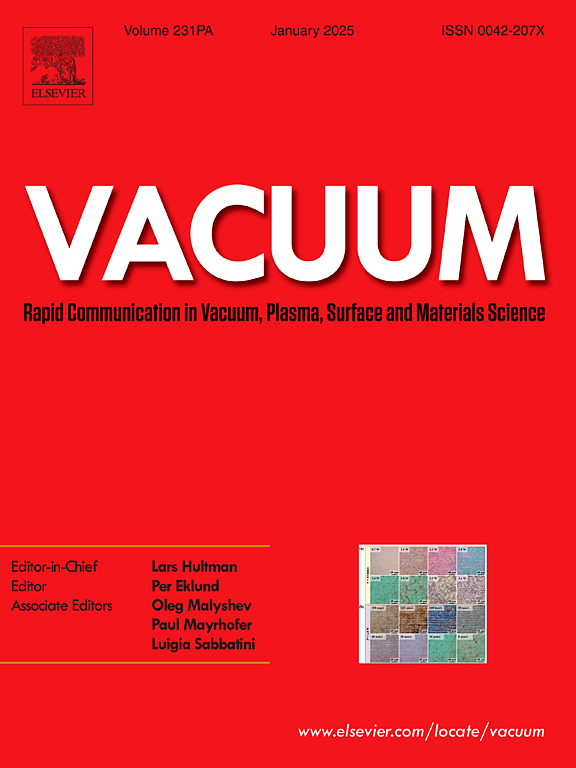Optical properties and Raman visualization in KTP crystals waveguide by 2.4 MeV helium ion implantation and femtosecond laser ablation
IF 3.8
2区 材料科学
Q2 MATERIALS SCIENCE, MULTIDISCIPLINARY
引用次数: 0
Abstract
The Z-cut potassium titanium phosphate single crystals were implanted with 2.4 MeV helium ions at a fluence of 2.2 × 1016 ions/cm2. The vacuum level duing ion implantation is approximately ∼10−4 Pa. The vacancy distribution was calculated using the SRIM code. Post-implantation, the samples underwent annealing at temperatures of 200 °C, 300 °C, 400 °C, and 500 °C for a duration of 1 h in an ambient atmosphere. To assess the waveguide's optical confinement capabilities, the dark mode spectra were measured using prism-coupling, while the end-face coupling method was employed to capture the near-field patterns of light propagation at a wavelength of 633 nm. The micro-Raman spectroscopy was utilized to investigate the structural properties across the entire implanted region. Additionally, combined with femtosecond ablation, the ridge waveguides with acceptable propagation loss were obtained. These results suggest that He-implanted KTP optical waveguide has prospects in appropriate optical devices for practical applications and warrant further exploration to unlock their full potential.
求助全文
约1分钟内获得全文
求助全文
来源期刊

Vacuum
工程技术-材料科学:综合
CiteScore
6.80
自引率
17.50%
发文量
0
审稿时长
34 days
期刊介绍:
Vacuum is an international rapid publications journal with a focus on short communication. All papers are peer-reviewed, with the review process for short communication geared towards very fast turnaround times. The journal also published full research papers, thematic issues and selected papers from leading conferences.
A report in Vacuum should represent a major advance in an area that involves a controlled environment at pressures of one atmosphere or below.
The scope of the journal includes:
1. Vacuum; original developments in vacuum pumping and instrumentation, vacuum measurement, vacuum gas dynamics, gas-surface interactions, surface treatment for UHV applications and low outgassing, vacuum melting, sintering, and vacuum metrology. Technology and solutions for large-scale facilities (e.g., particle accelerators and fusion devices). New instrumentation ( e.g., detectors and electron microscopes).
2. Plasma science; advances in PVD, CVD, plasma-assisted CVD, ion sources, deposition processes and analysis.
3. Surface science; surface engineering, surface chemistry, surface analysis, crystal growth, ion-surface interactions and etching, nanometer-scale processing, surface modification.
4. Materials science; novel functional or structural materials. Metals, ceramics, and polymers. Experiments, simulations, and modelling for understanding structure-property relationships. Thin films and coatings. Nanostructures and ion implantation.
 求助内容:
求助内容: 应助结果提醒方式:
应助结果提醒方式:


